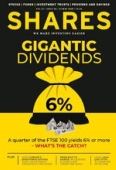Archived article
Please note that tax, investment, pension and ISA rules can change and the information and any views contained in this article may now be inaccurate.
Decades of hard saving to fund a happy retirement

Retirement can be a liberating experience as finishing work gives you the freedom to enjoy life, learn new skills and embrace a wide range of hobbies.
This can come at a cost as individuals may need to have saved hard through their working lives to ensure they have adequate savings and enough income to fund their desired lifestyle in older age.
James from Sussex knows all about this challenge as he is in the final stages of his working career and is making sure his portfolio is robust enough to support a happy retirement.
In his early sixties and married with no children, James has built up an investment portfolio worth approximately £450,000 and also has occupational pensions to help fund his retirement.
The Government service worker admits he has a couple of expensive habits – namely running a boat and going on holidays – and he certainly doesn’t want to give them up.
‘My investment strategy is long term, intending to build a capital base which will yield enough income, added to my pensions, to fund my lifestyle indefinitely,’ says James.
TAKING ADVANTAGE OF TAX BENEFITS
His current investment pot is the result of years of hard work. James has been saving into various tax-efficient wrappers since the early 1990s, namely PEPs (personal equity plans), TESSAs (tax-exempt special savings accounts) and ISAs (individual savings accounts). Initially James opened lots of accounts but has now consolidated them into three accounts to make life simple.
There is also a SIPP (self-invested personal pension) into which he has saved money for the past two decades to take advantage of tax relief and have a pot of money to complement occupational pensions.
STARTING RELATIVELY EARLY
James bought his first home at age 28. Once repayments became more manageable and he had spare cash after paying the bills, at age 35 he started to dip his toes into the world of investing.
‘My father had been very thrifty and always took care to invest over many decades, so I probably learned from his example,’ he remarks.
And now James has found himself on the other side of the table where he is helping other family members to get the most from their finances.
He runs his mother’s investment portfolio, described as being ‘substantial’, with the goal of making it last as long as possible while paying her care home fees.
‘I also advise my family members when they ask, which is often, although I am conscious that everyone’s resources and risk appetite are different.’
50% IN SHARES
Half of his portfolio is held in individual company shares, often split into silos as a play on what he believes to be ‘predictable long term sectors’.
Examples include Sainsbury’s (SBRY) as a play on basic foods; Ashtead (AHT), Hill & Smith (HILS) and Castings (CGS) for the infrastructure theme; and William Hill (WMH) for exposure to the gambling sector.
James’ portfolio also includes numerous utility companies such as Severn Trent (SVT), United Utilities (UU.) and National Grid (NG.); as well as insurers Aviva (AV.) and RSA (RSA).
‘Nearly all my companies have done well – decent regular dividends and they’ve held up their book values – over decades, which is why I keep them. I favour yields of around 4% and am happy with that,’ he comments.
ADDING FUNDS TO THE MIX
A fifth of James’ portfolio is in funds with the investor selecting products for exposure to areas where he feels he doesn’t have adequate knowledge.
His preferred funds include four unit trusts from Fidelity to play the Far East and Europe regions and special situations. The latter is a term used to describe investing in companies based on specific situations rather than underlying fundamentals. For example, this might be a business trading below its intrinsic value or one where an activist investor is trying to enforce change.
The largest fund holding in his portfolio is Mercantile Investment Trust (MRC) as a way of accessing UK small and mid-sized companies. James also has 7% of his investments in five venture capital trusts and another 20% in fixed-rate bonds and preference shares.
LEARNING THE HARD WAY
Despite building up a large portfolio of diversified assets, James admits it hasn’t always been an easy ride. ‘I have made mistakes and suffered disappointments,’ he says. ‘I usually sell holdings in those companies, preferably once share prices recover to what I feel is reasonable.’
He gives the example of packaging group MPAC (MPAC:AIM), previously known as Molins. ‘It got into difficulties, stopped its dividend and I felt the shares no longer suited me, so I sold my substantial (£30,000) holding in batches, all for higher prices than I had originally paid.’
Several years trading commodities also taught James the mental discipline of accepting significant losses now and then ‘as well as appreciating the good times without hubris’.
DISCLAIMER: Please note, we do not provide financial advice in case study articles and we are unable to comment on the suitability of the subject’s investments. Individuals who are unsure about the suitability of investments should consult a suitably qualified financial adviser. Tax rules apply.
Important information:
These articles are provided by Shares magazine which is published by AJ Bell Media, a part of AJ Bell. Shares is not written by AJ Bell.
Shares is provided for your general information and use and is not a personal recommendation to invest. It is not intended to be relied upon by you in making or not making any investment decisions. The investments referred to in these articles will not be suitable for all investors. If in doubt please seek appropriate independent financial advice.
Investors acting on the information in these articles do so at their own risk and AJ Bell Media and its staff do not accept liability for losses suffered by investors as a result of their investment decisions.

 magazine
magazine









